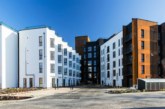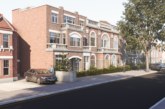
Rob Woolston, Director at multi-disciplinary design practice, rg+p outlines his reaction to the newly launched National Design Guide from the Ministry of Housing, Communities & Local Government.
At the end of September, Housing Secretary Robert Jenrick launched a new design guide with the overarching objective to set a national benchmark for measuring and delivering good design and placemaking. This is the first attempt of its kind and it’s certainly encouraging but what does it mean for us, as design professionals, on a daily basis?
The guide is framed around ten characteristics; context, identity, built form, movement, nature, public spaces, uses, homes and buildings, resources and lifespan, that when considered holistically should create good space, nurture a community and address environmental issues.
Without wishing to sound conceited, these ideas aren’t new or especially ground-breaking, it’s what architects, master planners and urban designers are trained to do. Where it does provide an advantage is it focuses the mind of those with a vested interest in the provision of new communities – planners, policy makers, local authorities – those who have skillsets in other areas; and gives them the material to make more complete judgements.
Another clear advantage is, rather unusually, that the guide references specific project examples for each characteristic. We’ve not seen the government do this before so again, I expect this to become a useful tool for those required to judge design.
Challenges
Some of the challenges I anticipate are that the guide is focused on a national level, and whilst there was encouragement for it to be rolled out locally, there is no standard format or funding made available for this. So where it makes reference to context and identity, this becomes difficult to gauge because they’re only truly determinable at local level.
Secondly, it does not provide any clarity as to how to judge a successful outcome against the ten characteristics. As we know, design is entirely subjective; it can mirror an area or directly contrast it, and there is currently no guidance to determine success.
Going forward, how the guide is implemented remains the key question. Are we heading towards the return of architects being directly employed by local authorities for instance? Are the ten characteristics going to be given any sort of formal adjudication or do we still adhere to previous standards e.g. Building for Life 12 and use these alongside each other?
As with any national guidelines, it is inevitable there will be questions raised and teething problems as the document is distilled but we should applaud the intent. If used in the right way, with the right advice, the guide brings together all the right ingredients to create the nearest thing we’ll have to a nationwide design standard. Let’s work together and embrace it.






